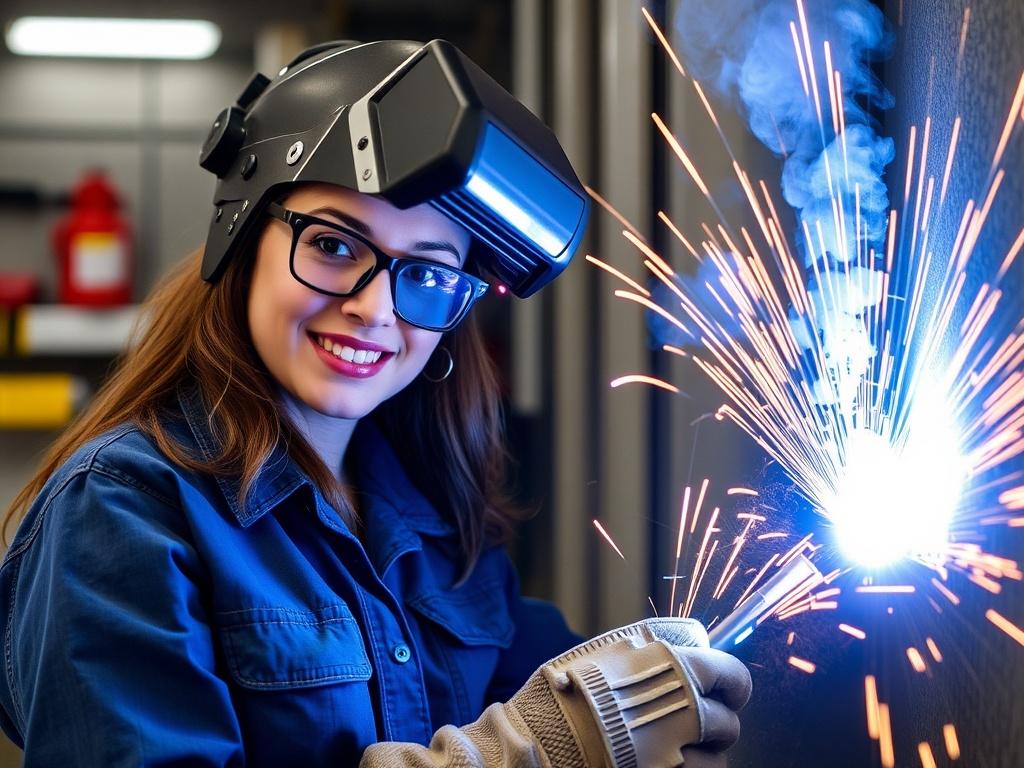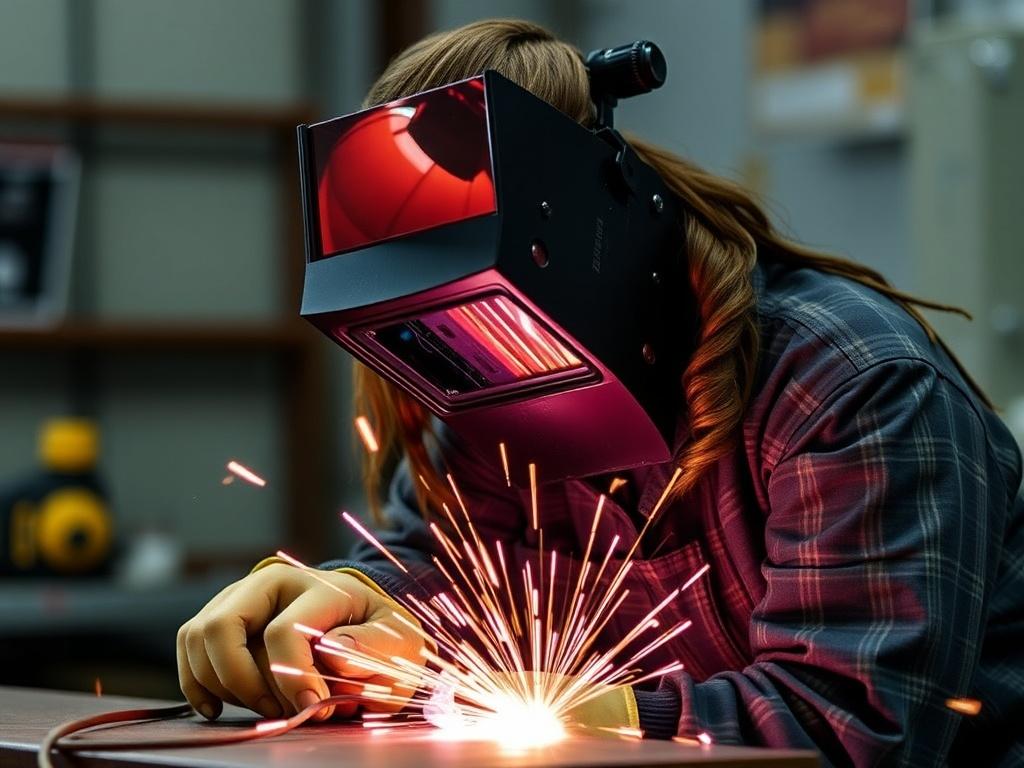
Welding, traditionally seen as a male-dominated trade, is undergoing a powerful transformation. Women in welding are breaking stereotypes in the industry and paving the way for future generations of skilled professionals. This career, once limited by outdated notions of gender roles, now recognizes the talents, strength, and precision that women bring to the craft.
In this in-depth article, we will explore the historical background of women in welding, present-day challenges and opportunities, inspiring stories of trailblazers, educational pathways, and the future outlook of diversity and inclusion within the welding industry. Whether you are a student considering a welding career, an employer seeking diversity, or simply curious about how women are shaping this essential trade, this article will offer compelling insights and information.
The Historical Context of Women in Welding
Before we dive into the present reality and future possibilities, it’s important to understand where the welding industry began—and how women were involved historically. In many societies, skilled trades like welding have long been associated with men due to the physical demands and the industrial environment. However, historical necessity during war times, especially World War II, thrust many women into roles traditionally held by men, including welding.
During the 1940s, women were urgently recruited to work in shipyards, aircraft manufacturing, and other industries critical to the war effort. These women became known as “Rosie the Riveter,” a cultural icon representing female workers stepping into industrial roles. Among these roles, welding was crucial, and many women proved themselves more than capable of mastering the craft.
Yet, after the war ended, many women were pushed out of these jobs as men returned from service. The stereotype that welding was a men-only field returned, creating a barrier that remained for decades. It was not until recent years that women in welding began to gain more recognition and opportunity, breaking through these longstanding stereotypes.
Table: Timeline of Key Milestones for Women in Welding
| Year | Event | Significance |
|---|---|---|
| 1940s | World War II Women Welders | Women entered welding roles out of wartime necessity, proving capability. |
| 1970s | Increased Awareness of Gender Equality | Early efforts to break gender barriers in trade schools and workplaces. |
| 2000s | Recruitment of Women in Skilled Trades | Programs targeting women to enter welding and other trades grow significantly. |
| 2020s | Rise in Women Welding Professionals | Ongoing push for diversity leads to increased visibility and representation. |
Why Consider a Career in Welding?

For anyone, regardless of gender, a welding career offers stability, good pay, and the opportunity to work on exciting projects ranging from construction and manufacturing to automotive and aerospace industries. But for women in welding, it can also mean the chance to break down barriers and challenge stereotypes, serving as pioneers in an evolving sector.
Welding is more than sparks and heat—it requires skill, precision, and problem-solving abilities. The work can vary from fabricating skyscraper support beams to repairing pipelines or crafting artistic metalwork. For women who love hands-on work and want to balance creativity with technical skill, welding offers a unique blend.
Moreover, the demand for skilled welders remains high worldwide. As older tradespeople retire, the industry faces a labor shortage. Women in welding have a unique opportunity to fill this gap and contribute significantly to the economy while enjoying a rewarding and respected profession.
Benefits of Welding Careers for Women
- Competitive salaries: Skilled welders often earn well above average for trade jobs.
- Job stability: Essential industries rely on welding, ensuring long-term opportunities.
- Variety of fields: From marine to manufacturing, welding opens many doors.
- Hands-on work: Engage directly in creating and repairing important structures.
- Empowerment: Breaking stereotypes builds confidence and paves the way for others.
Challenges Faced by Women in Welding
Despite significant progress, women in welding continue to face unique challenges. The industry’s male-dominated culture can sometimes lead to feelings of isolation or being underestimated. Some women report facing gender bias, lack of access to appropriate tools or gear sized for their bodies, and occasionally even outright discrimination.
Physical demands are often cited as an obstacle, though many women prove that strength and endurance are more a matter of training and technique than gender. Additionally, workplaces not designed with women in mind, from restrooms to locker rooms and protective equipment sizing, can create discomfort or difficulty.
Workplace culture also plays a crucial role. Women in welding may encounter a lack of mentorship or support networks, important factors for learning and career progression. However, the rise of women’s trade organizations, mentors, and advocacy groups is addressing many of these issues.
Common Challenges Women in Welding Experience
- Gender stereotypes and misconceptions about physical ability
- Lack of proper safety gear and equipment designed for women
- Underrepresentation leading to feelings of isolation
- Workplace harassment or discrimination in some cases
- Limited mentorship and networking opportunities
Success Stories: Inspiring Women in Welding
There are countless inspiring examples of women in welding who have not only excelled in their craft but have also worked tirelessly to change perceptions about women’s roles in the industry. These trailblazers serve as role models for aspiring welders and illustrate how determination, skill, and passion can overcome barriers.
One such example is Simone Campbell, a master welder and fabricator who started her career in a small shop and progressed to managing large-scale industrial projects. She often speaks about how challenging it was to enter the field but highlights how rewarding it has been to mentor young women entering welding schools.
Another notable figure is Lena Garcia, who became one of the first female welding inspectors in her region, breaking into a typically male-held certification area. She now runs workshops promoting technical education among girls and young women interested in trades, especially welding.
These stories and many others prove that women in welding are not just participating; they are leading, innovating, and redefining the industry landscape.
Educational Pathways to Enter Welding

For women and anyone interested in welding, education and training are the foundation for a successful career. Several pathways can help you develop the necessary skills and certifications, whether you are a high school graduate, someone looking for a career change, or advancing your current welding knowledge.
Many community colleges and technical schools offer welding certification programs. Apprenticeships provide hands-on experience under the guidance of seasoned welders. Additionally, industry organizations often provide specialized courses in advanced welding techniques, inspections, and safety.
Online and hybrid models of welding courses are also becoming more common, though welding’s hands-on nature means in-person training remains essential.
Popular Welding Certifications
| Certification | Description | Typical Duration |
|---|---|---|
| Certified Welder (CW) | Entry-level certification verifying basic welding skills. | Weeks to months |
| Certified Welding Inspector (CWI) | Certification for weld inspectors to ensure quality and safety standards. | Several months to a year |
| Certified Welding Educator (CWE) | For instructors and trainers in welding programs. | Variable |
| Specialized Certifications | Examples include pipe welding, underwater welding, aerospace welding. | Varies |
How Industry and Communities Are Supporting Women Welders

Recognizing the value women in welding bring to the table, many organizations, trade schools, and companies are creating supportive environments. Initiatives focused on recruiting, training, and retaining women in welding provide scholarships, mentorships, and women-led workshops.
Groups such as Women Who Weld and American Welding Society Women’s Interest Group play a pivotal role in connecting women welders and advocates, offering educational resources and networking opportunities.
Furthermore, some companies have instituted diversity and inclusion policies that actively encourage hiring and sponsoring women welders. These efforts enhance workplace culture, reduce gender bias, and promote equality.
List of Resources and Organizations Supporting Women in Welding
- Women Who Weld
- American Welding Society – Women in Welding
- Women in Trades Network
- Apprenticeship.gov – Welding Programs
- Local community colleges and technical schools offering welding scholarships for women
Tips for Women Considering Welding Careers
If you’re thinking about entering the welding industry, the journey may come with challenges—but it is also one filled with exciting opportunities. Here are some practical tips to help you succeed:
1. Seek Out Mentors and Networks
Finding mentors who understand the trade and the unique challenges women face can offer guidance, encouragement, and help build confidence.
2. Invest in Proper Gear
Get welding gear sized for your body to improve comfort and safety. Many suppliers now offer women-specific safety equipment.
3. Keep Learning
Welding technology evolves. Continuous learning helps you stay competitive and opens doors to advanced roles.
4. Build a Support System
Connect with other women in welding through social media groups, professional organizations, and local meetups.
5. Embrace Strength and Patience
While welding requires physical effort, technique and practice reduce the strain. Patience in skill development is key.
The Future: Women Welding the Way Forward
As the welding industry continues to grow and diversify, the role of women in welding gains momentum. With increased awareness, education, and workplace inclusivity, the stereotypes once limiting women’s participation are steadily being dismantled.
Technological advances, such as robotics, automation, and advanced welding processes, present new opportunities. Women with skills in technology, engineering, and welding are positioned to lead innovation in these areas.
The continual push for gender equality and diversity benefits not only women but strengthens the entire industry by unlocking a broader range of talents and perspectives.
Projected Trends in the Welding Industry
| Trend | Implication for Women Welders |
|---|---|
| Technology Integration (Robotics and Automation) | Need for combined welding and tech skills, opening hybrid roles. |
| Increased Demand for Skilled Trades | More job openings and opportunities for women entering the field. |
| Diversity and Inclusion Initiatives | Improved hiring practices and workplace culture. |
| Growth in Specialized Welding Fields | Career paths in niche sectors such as aerospace and medical manufacturing. |
Conclusion: Empowering Women to Weld a New Path
Women in welding are proving that skills, will, and heart define a welder more than gender ever could. As they break stereotypes and build skills, they are shaping the future of one of the most vital trades in the world. The welding industry has always been a cornerstone of development and innovation, and today, women are integral to this ongoing story.
If you are considering a welding career or want to support women in welding, remember that every spark ignited symbolizes progress, every weld made contributes to strength, and every stereotype broken opens new doors. The future is bright—and it is being welded by women who refuse to be boxed in by outdated ideas.
So whether you pick up the torch yourself or cheer on others blazing trails, remember: the welding world is changing, and women are leading the charge.
